PWP1 transcriptionally regulates p53, modulating apoptosis and cell cycle to promote gastric cancer progression
- PMID: 39720977
- PMCID: PMC11947051
- DOI: 10.1007/s10495-024-02049-x
PWP1 transcriptionally regulates p53, modulating apoptosis and cell cycle to promote gastric cancer progression
Abstract
Gastric cancer remains a leading cause of cancer-related mortality worldwide. The prognosis often depends on early detection and understanding the molecular mechanisms involved in its progression. Periodic tryptophan protein 1 (PWP1) has emerged as a novel diagnostic marker, potentially linked to gastric cancer progression. This study aims to elucidate the impact of PWP1 on gastric cancer development, focusing on apoptosis, cell cycle regulation, and the role of p53. This study utilized gastric cancer cell lines to investigate the expression and functional role of Pwp1. Quantitative PCR and Western blot analyses were conducted to measure PWP1 expression levels. Apoptosis was assessed by using flow cytometry and TUNEL assays, and cell cycle analysis was performed to evaluate the impact of PWP1 modulation. Additionally, animal experiments were conducted using mouse models injected with gastric cancer cells, with PWP1 knockdown or overexpression, to observe tumor growth and progression. Statistical significance was evaluated using t-tests and ANOVA where appropriate. Elevated PWP1 expression was observed in gastric cancer tissues compared to normal tissues. PWP1's knockdown resulted in increased apoptosis and cell cycle arrest at the G1 phase, suggesting its role in promoting invasion and proliferation. Furthermore, animal experiments demonstrated reduced tumor growth in mice with PWP1 knockdown. PWP1 was found to transcriptionally regulate p53, affecting its expression and thereby influencing apoptosis and cell cycle pathways in gastric cancer. Our study identifies PWP1 as a novel oncogene frequently overexpressed in gastric cancer (GC). Through transcriptional regulation of p53, PWP1 enhances cell growth by influencing apoptosis and inducing G1 phase cell cycle arrest. These findings underscore PWP1 as a promising therapeutic target for treating GC, suggesting its potential for future clinical applications.
Keywords: Apoptosis; Cell cycle; Gastric cancer; PWP1; p53.
© 2024. The Author(s).
Conflict of interest statement
Declarations. Conflict of interests: The authors declare no conflict of interest. Ethics approval and consent to participate: Approval of the research protocol by the Ethics Committee of North Jiangsu People’s Hospital with the ethics number 2020KY-137. All institutional and national guidelines for the care and use of laboratory animals were followed. And approved by Yangzhou University (NO.202307001). Consent for publication: Not applicable.
Figures
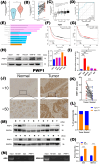

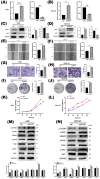
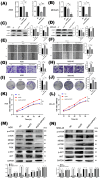
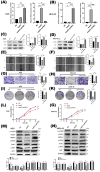

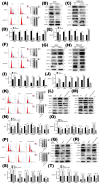

Similar articles
-
MicroRNA-223 functions as an oncogene in human gastric cancer by targeting FBXW7/hCdc4.J Cancer Res Clin Oncol. 2012 May;138(5):763-74. doi: 10.1007/s00432-012-1154-x. Epub 2012 Jan 22. J Cancer Res Clin Oncol. 2012. PMID: 22270966 Free PMC article.
-
HSPB1 promotes gastric cancer progression by suppressing PANoptosis.Acta Histochem. 2025 Sep;127(3):152277. doi: 10.1016/j.acthis.2025.152277. Epub 2025 Jul 24. Acta Histochem. 2025. PMID: 40712344
-
Integrin αVβ1-activated PYK2 promotes the progression of non-small-cell lung cancer via the STAT3-VGF axis.Cell Commun Signal. 2024 Jun 6;22(1):313. doi: 10.1186/s12964-024-01639-1. Cell Commun Signal. 2024. PMID: 38844957 Free PMC article.
-
TIS21 (/BTG2/PC3) as a link between ageing and cancer: cell cycle regulator and endogenous cell death molecule.J Cancer Res Clin Oncol. 2006 Jul;132(7):417-26. doi: 10.1007/s00432-006-0080-1. Epub 2006 Feb 3. J Cancer Res Clin Oncol. 2006. PMID: 16456675 Free PMC article. Review.
-
Elucidating the Role of CNOT2 in Regulating Cancer Cell Growth via the Modulation of p53 and c-Myc Expression.Curr Issues Mol Biol. 2025 Aug 4;47(8):615. doi: 10.3390/cimb47080615. Curr Issues Mol Biol. 2025. PMID: 40864769 Free PMC article. Review.
Cited by
-
The Single Nucleotide Substitution T → A rs2072580 Damages the CREB1 Binding Site in the Bidirectional SART3/ISCU Promoter.Genes (Basel). 2025 Jun 17;16(6):713. doi: 10.3390/genes16060713. Genes (Basel). 2025. PMID: 40565605 Free PMC article.
References
-
- Bray F, Ferlay J, Soerjomataram I, Siegel RL, Torre LA, Jemal A (2018) Global cancer statistics 2018: GLOBOCAN estimates of incidence and mortality worldwide for 36 cancers in 185 countries. CA Cancer J Clin 68(6):394–424 - PubMed
-
- Smyth EC, Nilsson M, Grabsch HI, van Grieken NCT, Lordick F (2020) Gastric cancer. Lancet 396(10251):635–648 - PubMed
-
- Reed JC (1999) Mechanisms of apoptosis avoidance in cancer. Curr Opin Oncol 11(1):68–75 - PubMed
-
- Sherr CJ (1996) Cancer cell cycles. Science 274(5293):1672–1677 - PubMed
-
- Vousden KH, Lane DP (2007) p53 in health and disease. Nat Rev Mol Cell Biol 8(4):275–283 - PubMed
Publication types
MeSH terms
Substances
Grants and funding
LinkOut - more resources
Full Text Sources
Medical
Research Materials
Miscellaneous

